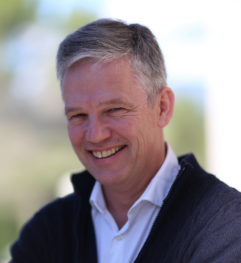Interview with Pr. Pascal Barbry, workpackage leader “plateforms & innovations” in OncoAge federation.
Team “Genomic physiology of eukaryotes” at IPMC (Institut de Pharmacologie Moléculaire et Cellulaire)

• What challenges has the emergence of the SARS-CoV 2 pandemic brought in terms of structural organisation and research in your activity ?
“My lab has lost a lot of money: (1) several expensive experiments were interrupted abruptly at the first lockdown; (2) several people hired on short term contracts were payed to stay at home during the lockdown (difficult to do wetlab experiments from home!), and they then left the lab shortly after, because they were arriving at the end of their term according to the well known counstraints of the “Sauvadet Law”. So, they were trained… for others! That’s just a waste…My lab has lost a lot of money: (1) several expensive experiments were interrupted abruptly at the first lockdown; (2) several people hired on short term contracts were payed to stay at home during the lockdown (difficult to do wetlab experiments from home!), and they then left the lab shortly after, because they were arriving at the end of their term according to the well known counstraints of the “Sauvadet Law”. So, they were trained… for others! That’s just a waste…”
• What adaptations may have been necessary from a management running and team/projects management point of views ?
“We have published several important works about the nasal and lung cells that interact with the virus. Our long-standing interest for these cells helped a lot to elucidate that question, and this led to several high impact publications in Nature Medicine and Cell. This was done essentially by using information that was already available from our past work. We then set up several project to study more directly the impact of SARS-CoV2 in our models. We are currently working with the Adult Pulmonology Unit of the Nice University Hospital, to detect the early events of the interaction between the virus and its host. Many aspects of our present work on the COVID are just a prolongation of what we were doing before, except that we need to increase our safety rules.”
• With which partners did you collaborate in order to participate in the collective global effort against COVID-19 ? What have been the pros & cons of such ventures ?
“We have also started a collaboration with the Metropole Nice Cote d’Azur, in order to characterize the different lineages of the virus that can be detected in wastewater. This has been a very interesting and producing collaboration, and our work has alerted about the early development of the english variant in specific area of the city. We are now working together in order to transfer this type of surveillance to Metropole services.”
• What kind of results and/or highlights & innovations did these partnerships/organisation procure in terms of improved knowledge and understanding of how the virus works ?
“Identiftying exact areas where specific forms of the virus are most active informs about future risks in the city. This can help the authorities to orient their policy on specific actions (information to people living in specific areas, special vaccination campaigns, etc) before the propagation of the virus to the whole city. From an academic point of view, it is a real life example in which you can see how biological entitities evolve and interact with their environment. An amazing illustration of Darwin’s theory!”
• What are your prospects for the future in terms of research project orientation ?
“We are also collaborating with industrials partners in order to set up a sustainable economic model to monitor wastewater. A lot still needs to be done, but I strongly believe that monitoring microbes in wastewater by sequencing can offer many opportunities for a safer future, and for rediscovering life’s little pleasures!”
